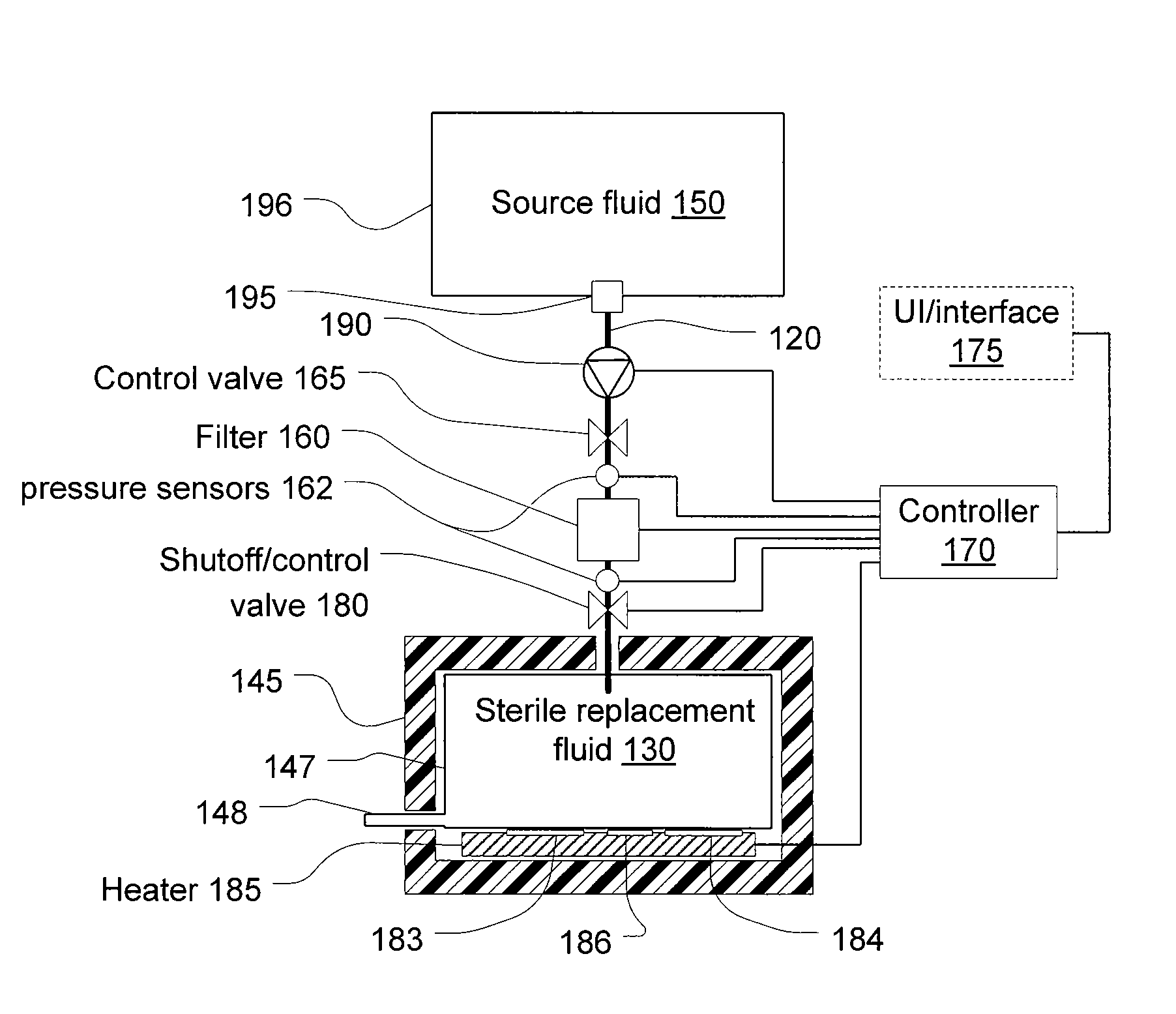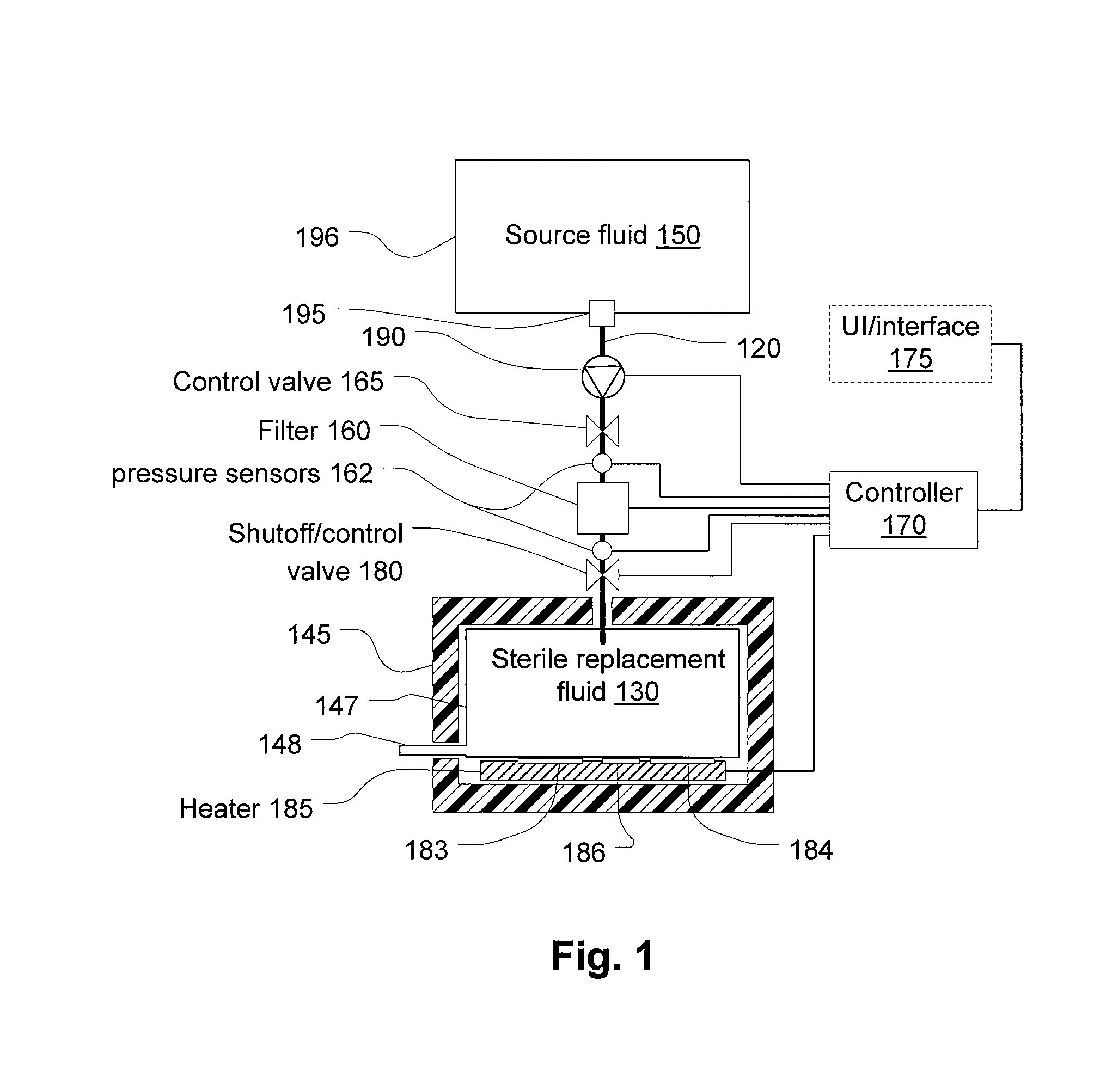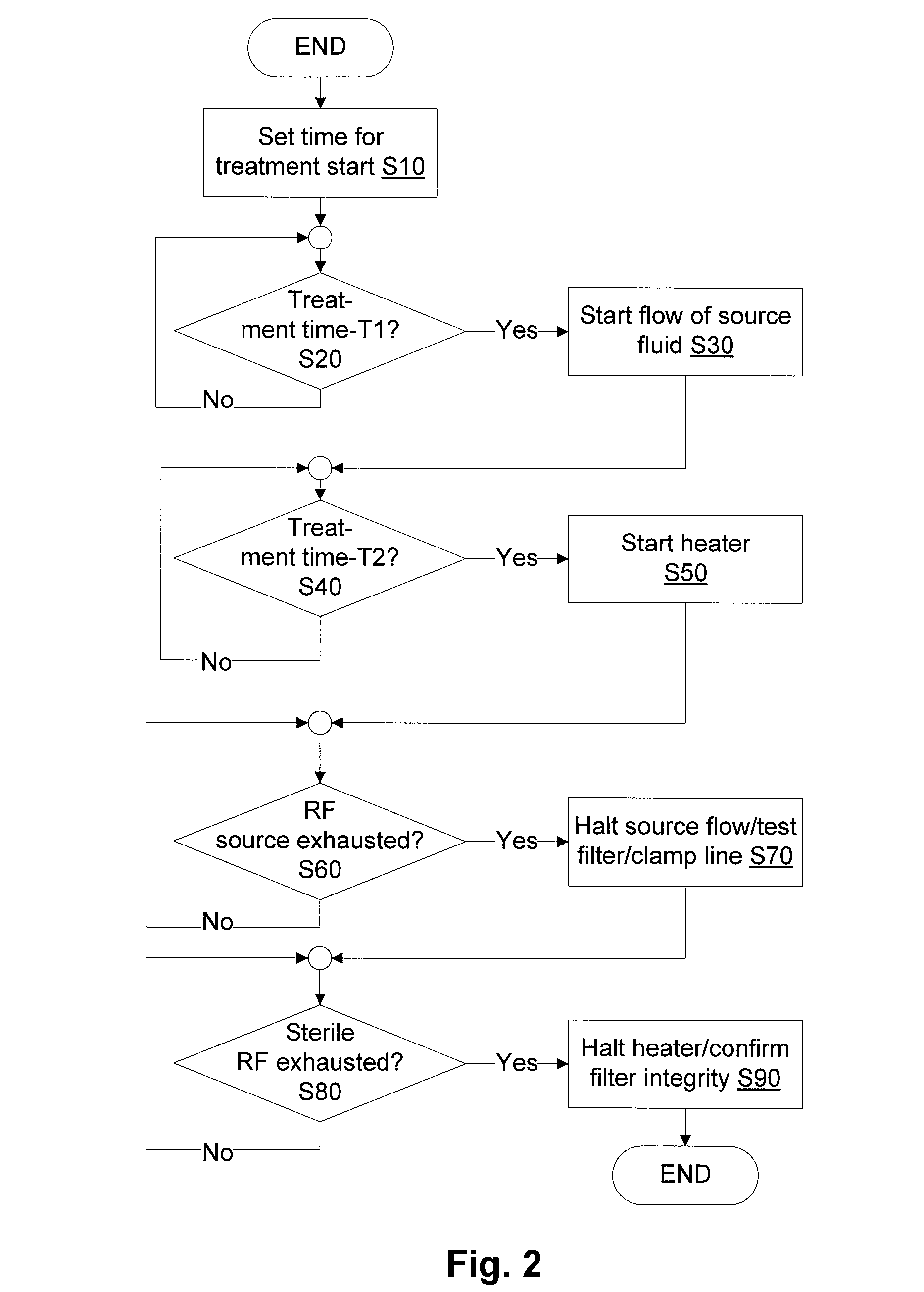Last-chance quality check and/or air/pathogen filtger for infusion systems
a technology of air/pathogen filtger and infusion system, which is applied in the direction of dialysis, solvent extraction, separation processes, etc., can solve the problems of contamination of the fluid, the introduction of contaminants into the fluid, and the replacement fluid packaged such that it is regulated as a drug may have an endotoxin load of up to 0.5 eu/ml, so as to prevent heat loss
- Summary
- Abstract
- Description
- Claims
- Application Information
AI Technical Summary
Benefits of technology
Problems solved by technology
Method used
Image
Examples
Embodiment Construction
[0054]Referring to FIG. 1, a filter 160 filters fluid from a source of fluid 150 to generate a batch of infusible replacement fluid 130. The filter 160 may be, and preferably is, a microporous filter that blocks pyrogens and allows the passage of dissolved electrolytes and water. The latter may provide an infusible fluid free of all pyrogens, however, in practice, the pyrogen concentration must be reduced, but not necessarily eliminated since total elimination is not practical. The most common type of pyrogen is endotoxins, which may be present even in sterilized fluids.
[0055]In hemofiltration, a large quantity of fluid is drawn from the patient and replaced with replacement fluid. Compared to dialysis, the quantity actually removed and replaced with replacement fluid tends to be high. As a consequence, it is desirable to provide replacement fluid that has a lower concentration of pyrogens than may be allowed in other infusible fluids and what may cross the membrane of a dialysis sy...
PUM
| Property | Measurement | Unit |
|---|---|---|
| pores sizes | aaaaa | aaaaa |
| pore size | aaaaa | aaaaa |
| concentration | aaaaa | aaaaa |
Abstract
Description
Claims
Application Information
 Login to View More
Login to View More - R&D
- Intellectual Property
- Life Sciences
- Materials
- Tech Scout
- Unparalleled Data Quality
- Higher Quality Content
- 60% Fewer Hallucinations
Browse by: Latest US Patents, China's latest patents, Technical Efficacy Thesaurus, Application Domain, Technology Topic, Popular Technical Reports.
© 2025 PatSnap. All rights reserved.Legal|Privacy policy|Modern Slavery Act Transparency Statement|Sitemap|About US| Contact US: help@patsnap.com



